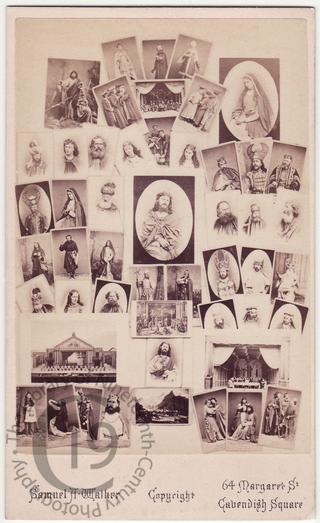
Oberammergau, 1870
The Passion play in the village of Oberammergau in the Barvarian Alps in south-west Germany has been held every tenth year (with a few exceptions) since 1634, the play now being performed at the start of each decade. The most famous of the few surviving Passion plays, it was instituted as the result of a vow made during an epidemic of bubonic plague in nearby Munich, which killed 15,000 people. The villages of Oberammergau vowed to do something in which the entire community would participate, rich and poor alike, if the village were spared the disease.
With as many as 1,700 villagers taking part, the production remains entirely amateur. The villagers divide the parts among themselves, and are responsible also for the production, music, costumes and scenery. Performers must have been residents of the village for at least 10 years. It is considered a great honour to take part and villagers forsake their businesses to do so. For authenticity, the men start growing their hair and beards a year in advance. During their lifetimes villagers will play several roles as they grow older, and in the village a production is remembered not by its year but by who played which role....'the year Old Hans was Herod' or the 'the year Johan Peters was Pilate'.
The all-day play is performed in an open-air theatre, which allows audiences of up to 5000 to see it each day over a period of three weeks, which still does not allow the million or more people who apply for tickets to see the production.
In the past the Passion was depicted as a struggle between 'Jews' and 'Christians', with the Jews deserving eternal damnation for the death of Jesus and wearing outlandish horned headdresses signifying their alliance with the devil, while Jesus and his disciples were dressed normally and their Jewish heritage obscured. After protests from both Christian scholars and Jewish representatives, these false distinctions have now been removed. In the light of the Second Vatican Council's ruling that 'one may not portray the Jews as discarded by God or rejected by God or cursed,' the struggle is now depicted as taking place within a Jewish community caught up in the conflict between an oppressed people and an occupying power. Significant changes have been made to the text, among which the Last Supper is now shown as the Passover Seder it was, and Jesus is addressed as 'Rabbi.'
Photographed by Samuel A. Walker of 64 Margaret Street, London.
Code: 123276




